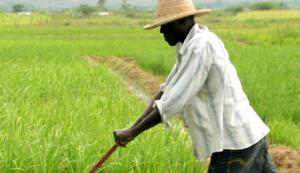Article Information
- ARTICLE_POSTED_BY: Marcel Wah
- ARTICLE_POSTED_ON: Jan 20, 2015
- Views : 773
- Likes : 1
- Category : Other
-
Description :
Chemonics
By empowering thousands of farmers to manage their farms as businesses, investments in Haiti’s agricultural system are moving the country toward a sustainable future.
Photo: Recent efforts to improve food security in Haiti have targeted value chains in many sectors, including rice and horticulture.
- Website : http://chemonics.com
Overview
“The funniest thing, and I consider this a revelation, is that I had some land and I never knew its importance and value,” said Haitian farmer Cadet Luckner. Land, however, may be the key to economic growth and food security in Haiti.
With 10 million people, Haiti is roughly the size of Massachusetts but has nearly double the population. Arable land is at a premium, and farmers like Mr. Luckner have an opportunity to improve their incomes and contribute to Haiti’s food security. Working directly with farmers is critical to building the agriculture sector in any country, but Haiti has unique challenges, including deforestation and soil erosion.
To move farmers from subsistence farming to productive agriculture, Chemonics, USAID, and the Haitian government are working together on achieving an integrated value chain solution to promote inclusive growth, strengthen private sector agriculture, introduce efficient environmentally responsible technologies, and create jobs.
Green Solutions Drive Change
A critical piece of increasing Haiti’s long-term agricultural productivity is ensuring that new technologies that drive development are also environmentally sustainable, particularly in a country so devastated by deforestation and soil erosion. One such innovation is introduction of greenhouses on hillsides. Seemingly simple, the greenhouses allow farmers to increase their yields while using fewer inputs and less land.
For flower producer Michel Dorlean, his new greenhouse meant more growing seasons and dramatically lower losses than planting outside. Standing outside his greenhouse, he said, “You only need three gallons of water to irrigate an entire greenhouse, compared to over 50 gallons needed outdoors for the same amount of plants!”
A 70-square-meter greenhouse on the hillsides of the town of Kenscoff produces three harvests of chrysanthemums, strawberries, or peppers, resulting in total revenues of $1,400 to $1,800. With traditional agriculture on these hillsides, an average farmer earns the same amount from 1 hectare, more than 142 times the size of the greenhouse.
